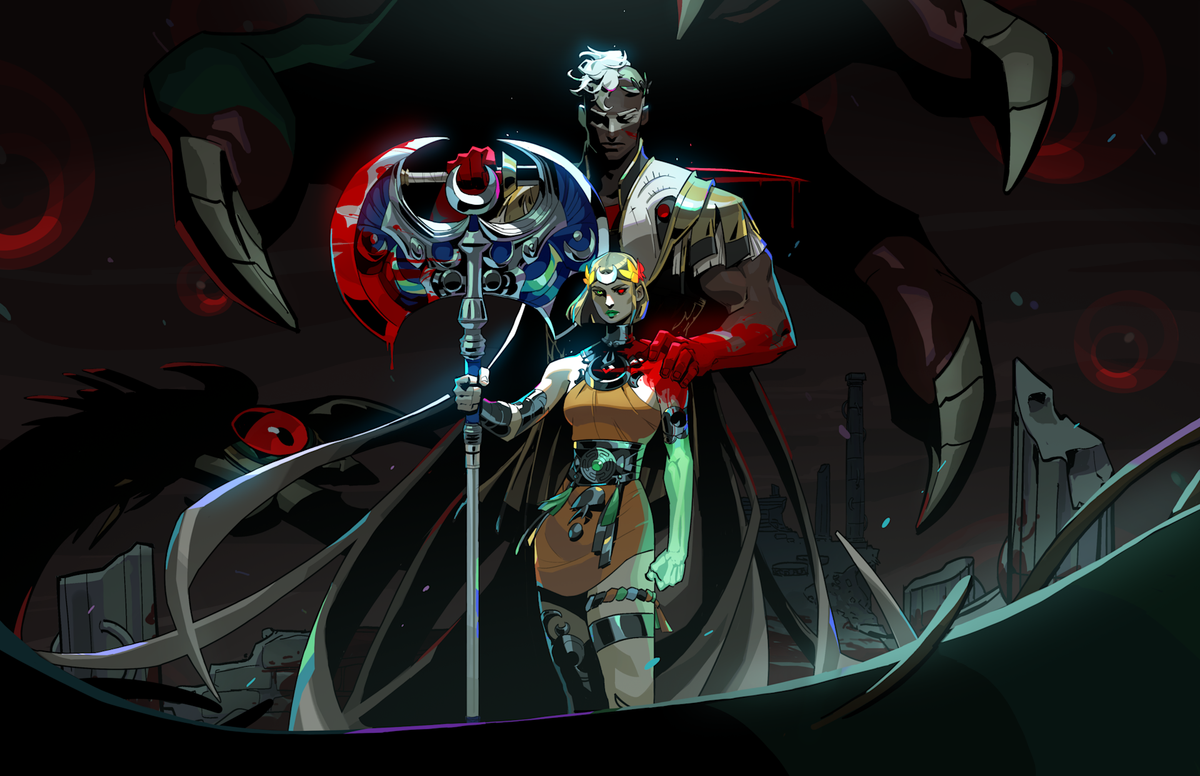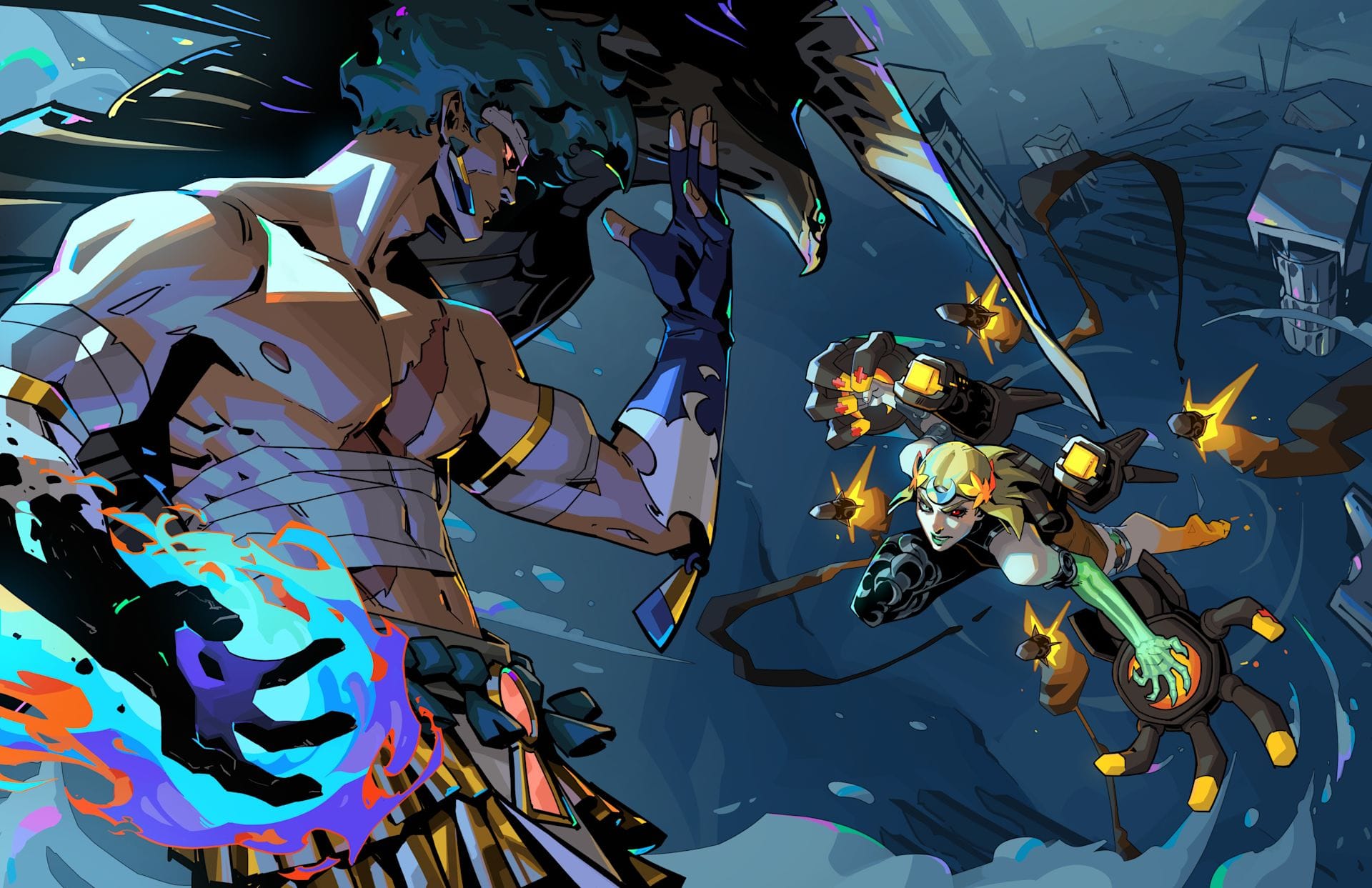Hades II (Switch): An Argument for Iteration

Beginning on Xbox Live Arcade with Bastion (2011), Supergiant Games have delivered a slew of original games united by an indelible style. To an extent, though, it felt like their design sensibilities were building up to 2020’s Hades, a roguelite that separated itself from its genre contemporaries by turning the roguelite structure into a narrative structure. Hades II, releasing a full five years later, is the studio’s first sequel. A step away from innovation and a step towards iteration and refinement. It is easy to critique this as a safe move but the game speaks for itself: a truly remarkable follow-up to an already excellent game.
The release of Hades II follows the game spending just over a year in early access, the same process that the original game went through (though on a different timeline). This is an interesting approach to design, where the game has been robustly tested and iterated upon over an extended period of time, speaking to a philosophy that values the creative input of the audience, and that wants to move towards that audience rather than have them move towards it. It is notably that what are perhaps the two biggest indie darlings of the year adopt opposite design ideologies. Team Cherry’s superb Silksong (2025) is the culmination of a very private development process, the result being a game tuned exactly to the interests of the developer, and one that the audience must acclimatise. This makes for a game built around friction. Hades II, on the other hand, feels built entirely around reducing friction and on empowering the player.
The rewards of this are obvious, most immediately obvious in how the game exists as a reply to the first game. The narrative innovations of the first game were the focus and, to an extent, dictated the scope. In terms of being a pure run based game, the original Hades wasn’t best in class. It had smart and satisfying systems but also felt quite limited. Variety came from picking between drastically different weapons and through the boon system, where you pick up upgrades from gods as you go (these games are based in Greek mythology) and craft your build as you progress. There was variation in here but also a lot of constants. Hades II immediately responds to this not only by adding greater divergence and variety to its main path (the same basic structure of fight through four areas and then face off against the final boss), a whole second route is added that is unlocked relatively early on in your playthrough.
The second path encapsulates all that is best about Hades II. It has unique enemies, unique areas and unique bosses. It feels like Hades III put into Hades II when talking on the terms of the original game. This new route is more challenging and builds off of what you’ve learnt from the original route. The first route is heading down, the new route is heading up; ultimately, the down route feels like a training ground for the upward path. You can really rely on upgrades when heading down, and can therefore experiment with builds. Going up is about applying what you’ve learned and making sure sure that not only your build crafting is on point, that you execution is also. This surface route has a compelling mix of circumstances that test your versatility. You can mainline DPS and win heading downwards with relative ease; going up top with that focus may help against bosses but you’ll also need reliable crowd control and there are specific enemies that will reveal key weaknesses. You need to know the game and play better, and this elevates the experience.

Overall, the game is much tighter. New protagonist, Melinoë, controls differently to Zagreus from the first game — though they are similar. Every weapon in this game is new, all are really interesting, and Zagreus’ cast ability (where he fired out a projectile you could modify with upgrades) is now a binding circle: place it on the ground and enemies are slowed, and this can be upgraded to do more. Combat flow is changed greatly with new possibilities for crowd control that also facilitate more interesting encounter design. Mel also has a mana system, where you can hold down each attack button to do an 'omega' version of that attack that uses this resource. Mana resets per encounter, and you can find ways to replenish it. The modified attacks can be hugely different and will totally change a play style; they are also just another great variable to complicate build crafting. You can carve out approaches that give you ways to keep getting mana back, or you can sacrifice chunks of your mana bar for potent upgrades. The game just brims with well balanced possibilities that make it really tactical as well as immediate. There’s more than enough now to give runs inherent variety in a way the first game lacked.
Another stumbling block with the original was how the narrative structure could feel at odds with the roguelite template. The early to mid game of Hades just felt like waiting, as progress was very linear. Truly skilled players may finish the game early but really you’re on a progression path where you will eventually buy all the upgrades and then just win. You may win before this but you’re still on the treadmill. After that point, you just have to win several times to keep story happening which relied too much on external reward rather than internal satisfaction. Two paths alter this but the early game is just much more varied in general. The upgrade system is now based around you balancing a deck of arcana cards. You can’t just apply every upgrade, you have to select which ones you bring. You’ll be able to bring more with upgrades but it always remains a choice and the conditions for some outlaw others. Your play style feels more individual and the feeling of a treadmill is gone. There are also a number of upgrade currencies now, that give you the persistent feeling of multiple things to focus on. There’s a great synergy between above and below where you will need to make above progress to get some resources that will unlock upgrades that will help you below. The path to progression keeps you doing different things in such a well paced way. Here, the early access process evidently pays off. The game retains challenge but always empowers you and allows you to have compelling short term goals.
All of these aspects feel like a perfection of what came before. A solid roguelite with a well implemented progression curve has now become a superb roguelite with a far less prescribed path to success — or a better maintained illusion of such. The only issue, and it is an important one, is that the narrative is notably weaker here. The personal stakes of Hades are replaced with grand, world saving ones — sequel stuff. You are now battling to save time, basically, and the theming is great. Your new hub has the feel of a wartime encampment, the narrative atmosphere works and the new character fits nicely here. As the story progresses, though, it goes off a cliff. This culminates in a deeply unsatisfying ending that makes everything that comes before it feel weaker. Throughout, the writing is lightly marred by a forced positivity and a homogeneity of voice that flattens divergent characters. There are notable exceptions but the ending works against this.
Overall, the game is outstanding, though. Hades, the first game, mattered because of the narrative. That innovation made it special. This is just special in general and matters in spite of how it is narrativised. The story is now just a facilitation for a superb combat loop and a stellar run based game. You’ll keep playing because of the improved systems and the mechanical possibilities. Where the last game didn’t flourish with repetition, this excels. The bosses are a real highlight — great every time — and every aspect feels fine tuned to how it should be played. Perhaps a touch more friction would be nice, a design with independent vision, but this egalitarian approach has really led to well polished gem.





Comments ()